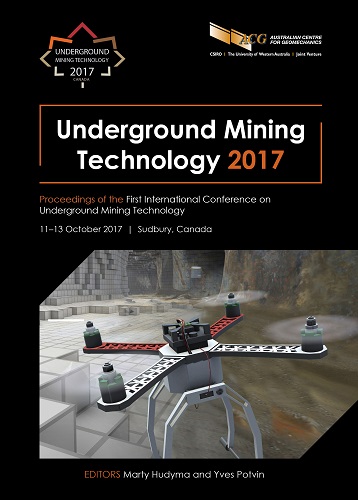New methods and equipment for three-dimensional laser scanning, mapping and profiling underground mine cavities

|
Authors: Ahmed, SN; Gagnon, JD, Makhdoom, MN; Naeem, R; Wang, J |
DOI https://doi.org/10.36487/ACG_rep/1710_37_Ahmed
Cite As:
Ahmed, SN, Gagnon, JD, Makhdoom, MN, Naeem, R & Wang, J 2017, 'New methods and equipment for three-dimensional laser scanning, mapping and profiling underground mine cavities', in M Hudyma & Y Potvin (eds), UMT 2017: Proceedings of the First International Conference on Underground Mining Technology, Australian Centre for Geomechanics, Perth, pp. 467-473, https://doi.org/10.36487/ACG_rep/1710_37_Ahmed
Abstract:
In this paper, methods related to 3D laser scanning and profiling underground mine cavities that are radically different from traditional cavity monitoring systems are presented. Traditional systems suffer from many drawbacks, including long scan time, being limited to stationary scan capability requiring point cloud stitching, long set up time, bulky systems and low point cloud density. V-SCAN3D offers a highly versatile scanning system that is fast, capable of performing both mobile and stationary scans, and is lightweight and compact. Simultaneous localisation and mapping (SLAM) software enables mobile scanning and generation of 3D maps. This paper discusses case studies related to their use in real mining environments and how it dramatically increases safety and scanning efficiency.
Keywords: cavity monitoring systems, cavity surveying, underground mine scanning
References:
Amann, M-C, Bosch, T, Myllyla, R & Rioux, M 2001, ‘Laser ranging: a critical review of usual techniques’, Optical Engineering, vol. 40, no. 1, pp. 10–19.
© Copyright 2025, Australian Centre for Geomechanics (ACG), The University of Western Australia. All rights reserved.
View copyright/legal information
Please direct any queries or error reports to repository-acg@uwa.edu.au
View copyright/legal information
Please direct any queries or error reports to repository-acg@uwa.edu.au